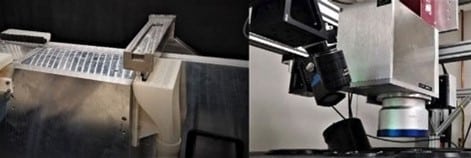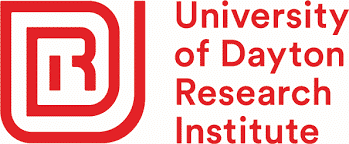


Utilize in-situ laser powder bed fusion (LPBF) sensors to inform smarter, “point of concern” part inspections.
Ultra high resolution CT locations are selected from high probability spatter voxels which are determined by machine learning.
Problem
Currently, metal additive manufacturing (AM) is being utilized as an iterative trial-and-error printing process that requires time consuming post-inspection steps to inform each design/build iteration. In addition, components in aircraft and weapons systems operate under demanding conditions, requiring stringent quality assurance procedures to detect and locate nonconformances that might compromise flight safety. Costly nondestructive evaluation (NDE) is required to identify these nonconformances. This project sought to illuminate and enable a more focused NDE to reduce time/cost and eventually enable detection of data anomalies in- situ that could lead to identification of critical end part nonconformances.
Objective
The objective of this project was to reduce the time and associated costs of obtaining the first good metal AM part. By correlating in-situ data to ground truth NDE data, the project identified regions of interest or “points of concern” for a targeted/streamlined NDE approach. The goal was to demonstrate how in-situ laser powder bed fusion (LPBF) sensors coupled with effective data management/correlation could enable machine learning algorithms to identify part regions and resolution.
Technical Approach
The University of Dayton Research Institute (UDRI) led the program team which included Northrup Grumman Corporation (NGC), ZEISS, Open Additive, and Macy Consulting. UDRI’s DART selective laser melting (SLM) system with its open architecture 3D printing platform allowed researchers to customize the printer’s use of materials and monitor printing progress using a variety of sophisticated sensors. NGC provided a representative design of an aluminum heat exchanger that was modified for AM fabrication. UDRI printed the NGC identified heat exchanger parts utilizing their DART SLM machines. ZEISS performed multi-resolution X-ray computed tomography (CT) on each correlation build. Upon finding the nonconformances in post inspection, the CT data was used to correlate end part nonconformances to in-process anomalies. The technology demonstration showcased how costly post inspection time could be limited by utilizing in-situ data to determine points of concern for inspection.
Accomplishments
This project successfully showed the feasibility of using in-situ sensor data to focus NDE inspections to key areas. In some builds, high density spatter regions in in-situ data, determined by machine learning approaches, showed strong correlation with a large region of porosity in the heat exchanger build. Likewise, lower density spatter regions in the in-situ data were associated with a lower degree of porosity identified in the CT data.
Furthermore, the feasibility of using in-situ data to predict porosity in the CT was shown. Although the specific location of porosity could not be predicted currently, the machine learning network could predict a significantly lower amount of porosity across the entire build volume. The limited amount of porosity exhibited in some of the builds, however, made it challenging to fully assess the effectiveness of this approach. It is recommended that more data be collected to improve the correlations of in-situ anomalies to CT flaws and ultimately improve the effectiveness of these predictions.
As shown in this project, in-situ sensors are an effective tool that can enhance CT data. This project sets a strong framework for all the processing steps needed to correlate in-situ to CT data. With the framework developed, more data can be collected to mature the data base of correlations. As this data base matures, the NDE process can be significantly streamlined and possibly avoided entirely.
Project Participants
Project Principal

Other Project Participants
- Northrop Grumman Corporation
- Zeiss
- Open Additive
- Macy Consulting
Public Participants
- U.S. Department of Defense
